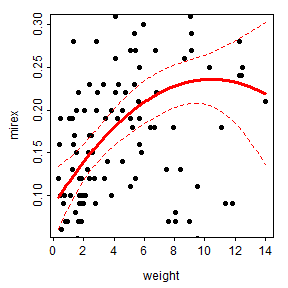

In one embodiment, the iboga alkaloid is administered throughout opioid treatment. In a preferred embodiment, the patient has not yet developed a tolerance to the opioid analgesic. In one embodiment, the patient has developed or is at risk of developing a tolerance for the analgesic. noribogaine, can be administered to a patient at a dose that potentiates opioid analgesic action while also minimizing the risk of unsafe QT interval prolongation by the iboga alkaloid. This invention is based, at least on part, on the surprising discovery that iboga alkaloids, e.g.

The use of morphine in combination with iboga alkaloids has been disclosed in non-human subjects such that it did not evaluate the QT interval prolongation, nor were dosing regimens addressed that affect potentiation while maintaining an acceptable QT prolongation. Potentiation of the opioid analgesic may be characterized by a number of parameters, including but not limited to: a decrease in the amount of opioid analgesic required to treat a similar pain level improved therapeutic effect from a specified dose of opioid analgesic, a reduced tolerance to the opioid analgesic reduced dependency on the opioid analgesic reduced risk of tolerance to the opioid analgesic or reduced risk of dependency on the opioid analgesic. This invention is directed, in part, to the use of an iboga alkaloid to potentiate the activity of opioid analgesic agents in a patient taking one or more opioid analgesics wherein the iboga alkaloid is dosed in an amount to potentiate the opioid while maintaining an acceptable QT interval prolongation. It would be beneficial to provide a method for potentiating the effect of opioid analgesic(s) in a patient taking one or more opioid analgesics for the treatment of pain, such that a lower dose of opioid is required to treat the pain. Side effects include sedation, dizziness, nausea, vomiting, constipation, and respiratory depression. However, high doses of opioids may lead to serious complications and side effects, including physical dependence, addiction, respiratory depression, nausea, sedation, euphoria or dysphoria, decreased gastrointestinal motility, and itching.įurthermore, opioid use is associated with a number of unpleasant side effects.

There are several potential methods for how tolerance develops, including receptor desensitization, receptor phosphorylation, receptor internalization or down-regulation, and up-regulation of inhibitory pathways.ĭrug tolerance requires that the dosage of analgesic be increased in order to provide sustained analgesic effect. Drug tolerance occurs when the patient's reaction to the drug is reduced, requiring an increase in dose to achieve the same desired effect. A patient who has developed tolerance to the opioid analgesic is not necessarily addicted to or misusing the analgesic. For example, the use of morphine as an analgesic is common among end stage patients suffering from serious pain where addiction is no longer a concern.ĭrug tolerance to opioid analgesics is common, and may be psychological and/or physiological. Indeed, potential addiction to such opioids is a serious issue that limits the therapeutic use of addictive opioids as analgesic agents. As is well known, continued use of many such opioids (especially at high doses) carries a significant risk of dependency/addiction. Upon administration, opioids initiate a cascade of biological events including increased serotonin and dopamine expression. Such opioids operate as mu receptor agonists. morphine, hydromorphone) are well-known and exceptionally potent analgesics. STATE OF THE ARTĪddictive opioid analgesic agents including derivatives thereof (e.g. In particular the potentiating amount of the iboga alkaloid or pharmaceutically acceptable salt or solvate thereof is such that the maximum QT interval prolongation experienced by the patient is less than about 60 ms, less than about 50 ms, preferably less than about 30 ms, more preferably less than about 20 ms. In particular the methods and compositions include treating the patient with an analgesic opioid or derivative thereof in combination with a potentiating amount of an iboga alkaloid or pharmaceutically acceptable salt or solvate thereof at a safe and effective dosage. This invention is directed to methods and compositions for potentiating the effect of opioids in a patient undergoing or planning to undergo opioid analgesic treatment for pain. 7, 2015, each of which is hereby incorporated by reference into this application in its entirety. 25, 2015, which claims the benefit under 35 U.S.C.

10,660,900, which is a continuation-in-part of PCT Application No. This application is a continuation of U.S.


 0 kommentar(er)
0 kommentar(er)
